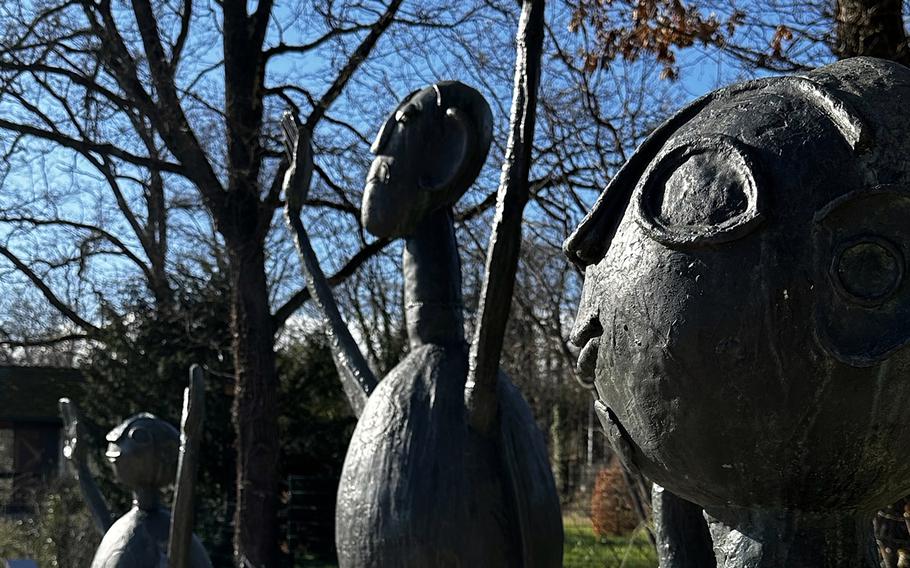
These three figures come together to form the “Picture of Hope,” found at the top of the sculpture garden in Erlangen, Germany. All of the figures are seen overlooking the city. (Michael Slavin/Stars and Stripes)
Located in the heart of Bavaria’s Franconia region on the outskirts of Nuremberg is the lesser-known city of Erlangen, offering a pleasant blend of old-world charm and modern comforts that warrants visitors’ consideration.
One of its highlights is Burgberg, a hill of roughly 1,000 feet in elevation that towers over the northern section of the city. Nestled in a lush corner is a sculpture garden, which beckons visitors to take a break.
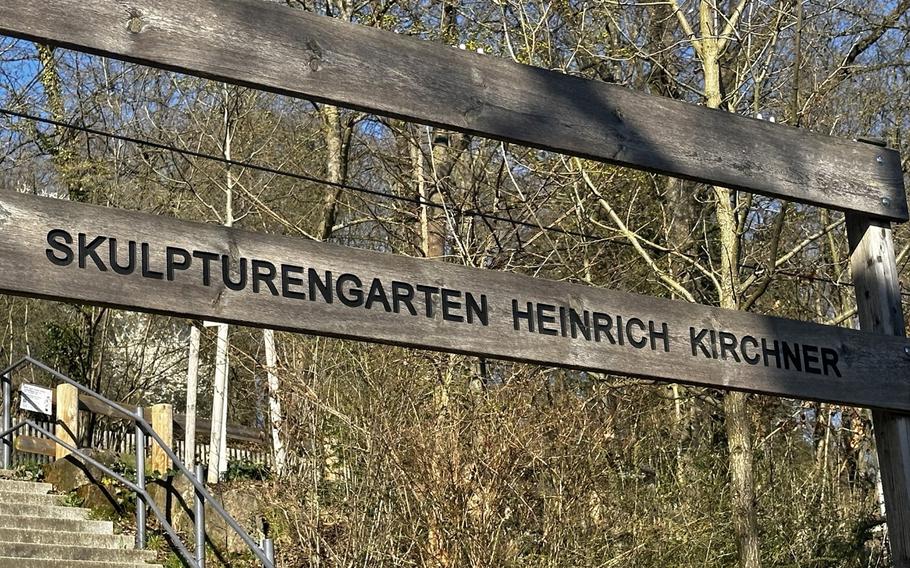
The Heinrich Kirchner sculpture garden in Erlangen, Germany, is located just 20 minutes outside of Nuremberg and contains 17 sculptures from the well-known artist Heinrich Kirchner. (Michael Slavin/Stars and Stripes)
The garden, which is just outside the picturesque city center, is dedicated to renowned sculptor Heinrich Kirchner. He was born in Erlangen and designed part of the garden.
Kirchner was known for drawing on the relationship between humans and nature.
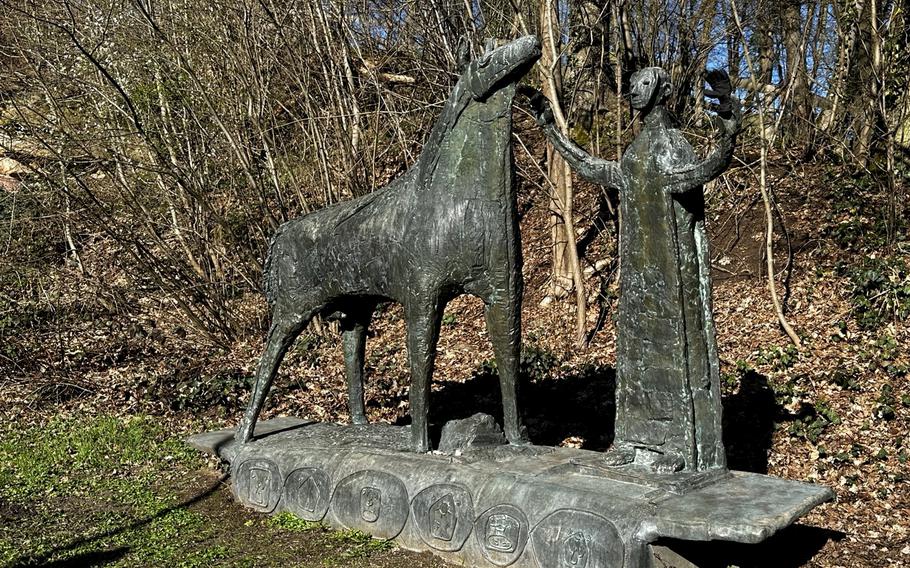
The sculpture “Mann mit Pferd,” or "Man with Horse," can be seen with gloves on for the winter months in Erlangen, Germany. Sculptures in the garden wear different clothing and decorations for the seasons. (Michael Slavin/Stars and Stripes)
Peeking through the trees and spreading their arms over lawns and clearing, the impressive bronzes range from 5 feet to well over 20 feet in height.
All of them feature oddly shaped torsos and limbs. The oblong and rounded metal faces seem alien, as if cribbed from an H.G. Wells book.
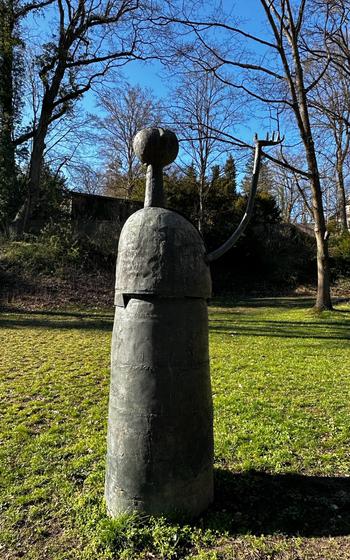
The “Wanderer Abraham” is a classic example of artist Heinrich Kirchner’s minimalist style at the sculpture garden in Erlangen, Germany. The figure only has one arm. (Michael Slavin/Stars and Stripes)
This creative take on the human form ruffled feathers among Nazi art critics, who closely monitored the creative space and mocked or even censored what they considered “degenerate art.” In 1937, Nazi administrators confiscated one of Kirchner’s sculptures.
Today, the tranquil winding path of the park takes visitors up the hillside, passing 17 of his surviving works along on the way.
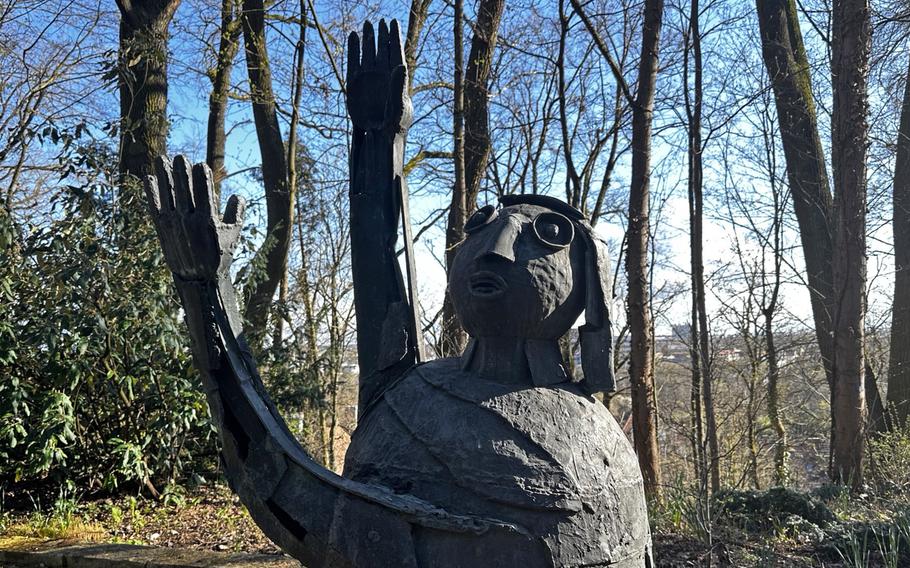
“Die Sitzende" is the oldest work of art in the sculpture garden in Erlangen, Germany. The original sculpture was completed by Heinrich Kirchner in 1935. (Michael Slavin/Stars and Stripes)
The older, less monumental figures are exhibited in the upper area, while the steeper, lower area is characterized by 10 gargantuan sculptures from the artist’s last years.
Parking is easily accessible at the bottom of the hill on the garden’s south side, and maps providing a list of the sculptures can be found at both the north and south entrances.
The walk through the garden takes around 15 to 20 minutes. The place also boasts some of the best views of the surrounding city.
The city overlook is also where visitors can see the three most notable sculptures, a work titled “Picture of Hope.”
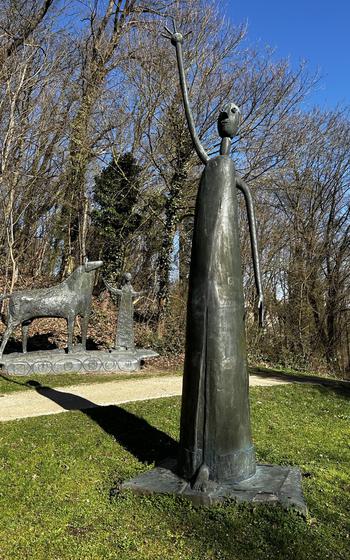
"The Proclaimer," one of Heinrich Kirchner's later works, was made in 1980. It stands over 15 feet tall at the south side of the sculpture garden in Erlangen, Germany. (Michael Slavin/Stars and Stripes)
The slightly larger-than-life figures are positioned in a squatting stance with their heads and eyes raised to the sky above, as if in celebration or prayer.
Another iconic piece in the garden is “Man in the Boat.“ According to the artist, this work depicts a shipwrecked man facing death. He surrenders and willingly waits for the transition to another “form of life or manifestation.“
Erlangen expanded its collection of Kirchner sculptures in 2020 with “Wanderer Joseph,” which is on display at city hall. The statue, which cost the city 27,000 euros, takes up the theme of a journey or pilgrimage, a recurring motif in Kirchner’s works in the garden.
Opened on the artist’s 80th birthday in 1982 with him present, the garden showcases an impressive selection of some of the finest pieces by Kirchner, who is considered one of the most important southern German sculptors of his generation.
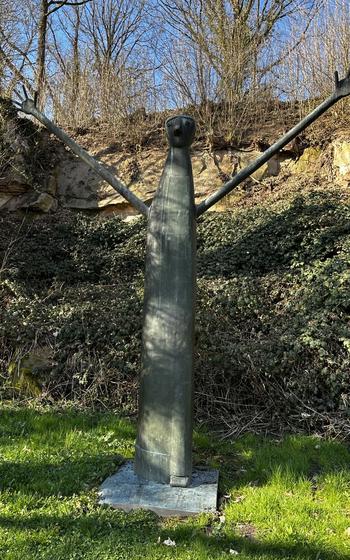
The “Schlanke Gestalt” or “Slim Figure” can be found just before heading up the hill to the overlook in the Heinrich Kirchner sculpture garden in Erlangen, Germany. The garden is located just 20 minutes outside of Nuremberg and contains 17 sculptures. (Michael Slavin/Stars and Stripes)
But this place is more than just a collection of static art. The surrounding space was created in an effort to keep the southern slope above the city green.
With its storytelling art, it is a tribute to nature and a place of serenity. And its setting near he banks of the Regnitz River is equally spectacular.
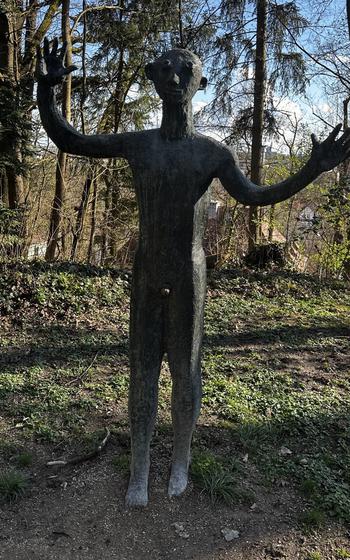
The 1963 sculpture “Neuer Adam,” or “New Adam,” is one of the most humanlike of all 17 sculptures in the Heinrich Kirchner garden in Erlangen, Germany, showing defined legs and arms. (Michael Slavin/Stars and Stripes)
On the QT
Address: Entrances on Burgbergstrasse and An den Kellern, Erlangen, Germany
Cost: Free
Hours: Around the clock year-round with exception of the Bergkirchweih festival May 25-June 5, 2023, and New Year’s Eve. In winter, access depends on weather.
Information: Phone: +49 9131 89510, Online: erlangen.info/poi/skulpturengarten_heinrich_kirc-27280